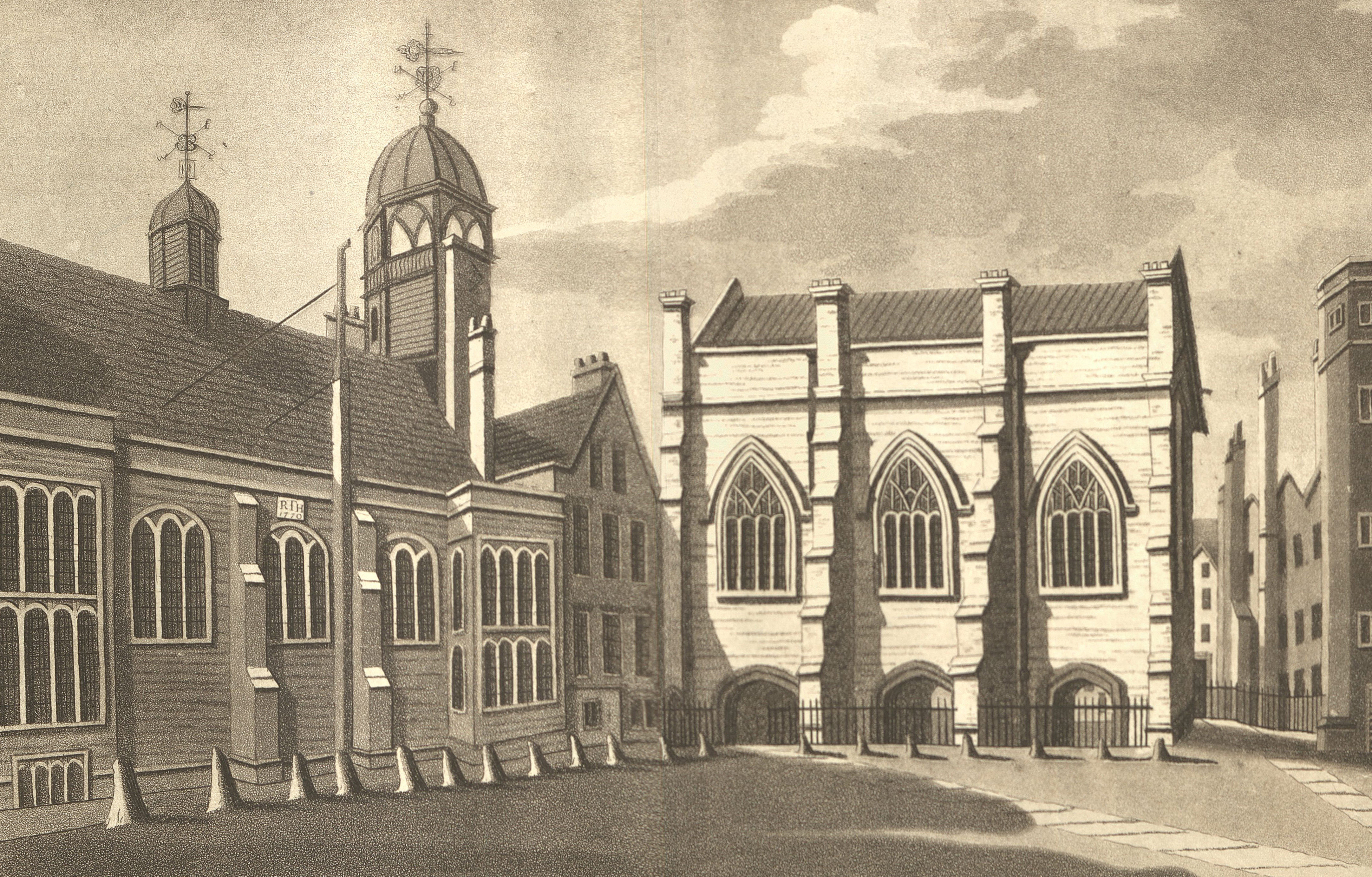Early Continental Legal Education
Legal education was “reborn” in medieval Europe with the rediscovery of the Emperor Justinian’s compilation of Roman law in the eleventh century. By the twelfth century, a law school was thriving at Bologna, Italy, and attracting students across Europe. Legal education there was rigorous, calling for years of study to obtain a doctorate. Instruction in canon law likewise received impetus from Roman law and flourished. The books of Roman law (Institutes, Digest, Code, and Novels) and key works of canon law (Decretum, Decretals, Liber Sextus, and Clementines) were glossed and commented on by law professors, based often on classroom lectures. The texts themselves were explained to beginning students through shorter glosses, while commentaries offered in-depth analysis. The method of teaching by glosses and particularly commentaries endured in continental schools for centuries.
Bartolus of Sassoferrato, Commentaria in Primam [Digesti] Veteris Partem, Nunc Recens Summa Diligentia & Fide Emendatus, & Suo Candori Restitutus … (Venice, 1590).
Bartolus of Sassoferrato (1313-57) is often regarded as the most authoritative scholar of Roman law during the Middle Ages. He taught law at Pisa and Perugia and was a prolific scholar, writing voluminous commentaries on Justinian’s extensive corpus of Roman law. Illustrations were rare in his (later) printed works, but this one is instructive, meant to aid students who were learning a complex set of special rights in property (servitudes). The tree serves to link and distinguish different types, including various easements.
Franciscus Accursius, Accursii Florentini Glossa ad Institutiones Iustiniani imperatoris ... ed. Pietro Torelli (Bologna, 1939).
The standard medieval gloss on all of Justinian’s corpus of Roman law, a massive undertaking, was written by Franciscus Accursius (c. 1182-1263). Here the opening prefatory text of Justinian’s Institutes is at center, as was the custom, with the Latin gloss surrounding it. The beautifully illuminated scene includes a historiated initial letter “I,” beginning the word “Imperatoriam” in the prologue. The text is an edited modern facsimile based on medieval manuscripts, with the editor’s notes at bottom.
A handful of Roman and canon law texts formed the basis of legal education on the continent. Students also had access to treatises on particular subjects, bibliographies, and study guides to help them master the dense labyrinth of law. Not all of these texts were very helpful, but a good number are fascinating in their own right. Some provided novel diagrams and techniques of illustration, annotated bibliographies, legal outlines and summaries, and mnemonic devices. Study aids for law students grew particularly from the seventeenth century onward.
Bernardus Schotanus, Examen Juridicum: Quo Fundamenta Jurisprudentiae Secundum Seriem Digestorum, Subjectis Suis Locis Titulis Codicis, Explicantur … (Amsterdam, 1662).
Arguably the most important task in law school is preparing for exams. Schotanus, a law professor in the Low Countries, perhaps heroically attempted to help students, including his own, to pass with flying colors. Here he reviewed the titles of Justinian’s weighty Digest, adding questions for each section and providing answers with references to supporting laws. In doing so, he provided a kind of outline for the Digest that law students could master. The title page image depicts an oral law exam.
Johannes Buno, Memoriale Institutionum Juris, Quod Librorum IV Titulos et Singulos eorum Paragraphos … (Ratzeburg, 1672).
This unusual book is a memorable mnemonic aid for legal studies, devised for use with the complex tomes of Roman law. The author here keyed each numbered title of Justinian’s Institutes to corresponding letters (1=A) and chose an image or scene to represent them. The images and words are packed together and often hardly intuitive. The book likely mystified more than it enlightened, though it has a wonderful curiosity value today.
Johan Frederik Böckelmann, Compendium Institutionum Justiniani: sive Elementa Juris Civilis, in Brevem & Facilem Ordinem Redacta (Leiden, 1681).
This portable guide is an epitome of Justinian’s Institutes, the basis of Roman law training on the continent. The engraved title page depicts and explains the steps of legal education, from learning basic principles of law, to study of the Digest, to practice in court. On the other side of the mountain, a student struggles to climb without a set course of study.

![Commentaria in Primam [Digesti] Veteris Partem, Nunc Recens Summa Diligentia & Fide Emendatus, & Suo Candori Restitutus](../riesenfeld_images/legaledhist/img/sassoferato/thumb-1.jpg)



